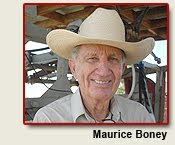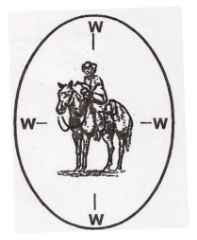WHY IRISH BLACKS?
We first asked that question after outlining what it will take to be profitable in the future with the cattle business. We had mapped out a plan in the spring of 2006 to make some significant changes in our cattle operation when we contacted an old acquaintance, Maurice Boney of Ft. Morgan, Co.
I had met Maurice in the mid 70’s and knew of this depth of knowledge in the cattle industry. I saw my first Irish Black Cattle in 2005 and was very impressed but had not made the connection of Mr. Boney and Irish Black cattle. After a search of the internet that put Irish Black cattle and Maurice Boney on the same line I got really interested. Lots of phone calls and then some extensive road trips made some profound change in our operation and the way we looked at the cattle industry and our future.
Here are some of the things we found.
Genetic Purity: All the registered Irish Blacks had their origin from Angus half sisters of the Revolution Line. Imported Beef Fresian Bulls from Ireland were mated to these angus females in 1971 to start the strict closed herd line breeding project. Sire to daughter matings were used as well as sibling (brother-sister) matings to eliminate genetic flaws and defects. Selection for positive dominant traits has resulted in the breed being homozygous for nearly all beneficial traits. As a result, when Irish Blacks are used to breed any outside herd, the ultimate in hybrid vigor is expressed. The resulting calves are all stamped alike in their phenotypes, performance and carcass traits. This is a rarity in today’s herds from continual crossbreeding and the "outcross" genetic philosophy.
Carcass Quality: Irish Blacks excel in carcass traits by minimizing backfat, enhancing marbling levels and tenderness, and improving Ribeye area and dressing percentage. Dressing percentages of 64% to 67%, Rib eyes of 13-14 inches, marbling scores over 3.5, and backfat measurements under .2 of an inch are consistently produced.
Performance: Irish Blacks are true performance animals they have been selected for rapid early growth and early maturity. Most can reach slaughter tenderness by 13-14 months. In the first 2 years of the line breeding project, only the calves that weighed 60% of their mothers weight at weaning were allowed to stay in the breeding herd.
Fertility: Bulls are noted for large scrotal circumference and very motile sperm. Scores of 92-98% normal sperm are the rule this is the main reason for the bulls being able to service 70-75 cows per year. Our experience with the bulls is that they display excellent libido and are "Breeding Machines."
The Females: Reach puberty early and will cycle several times before their first breeding, a key factor in conceiving when bred for the first time. This early attainment of puberty has a direct correlation with the large scrotal circumference of a females sire. Another factor in the breed back ability of Irish Black cows is their shorter gestation period. This gives the cows more time to ready themselves for the next breeding. Shorter gestation means fewer calving problems, fewer retained placentas and uterine infections, all leading to an earlier and a more fertile next heat cycle.
Marketing Flexibility: Due to the high demand for Irish Black calves they are highly sought after at weaning, as yearlings, and in the feedlot. Because of their carcass superiority, Irish Blacks are often retained by producers who want to cash in on the bonuses received for their marbling, carcass yields, dressing percentage and low back fat. We have chosen to so do just that, as we retain our commercial calves ½ & ¾ bloods to use in the ranch to rail program "Country Natural Beef". Our own carcass data has proven the increased profitability in using Irish Black bulls.
Environmental Adaptability: Irish Blacks have been sold to cattle operations in 22 different states. Satisfied customers hail from New Mexico to North Carolina, Montana to Mississippi, and from sea level to 12,000 ft elevation. Producers in the high mountains of Colorado & Utah have yet to report a case of brisket disease (high altitude disease), even at altitudes of 10,000 ft. to 12,000 ft. elevation. Our home range is 4,500 ft and we can go up to 9,000 ft. Winters are cold with snow from November to March.
Calving Ease: The primary factor in calving ease is calf birth weight. Irish Black heifer calves have an average birth weight of 70 pounds, while bull calves average 76 pounds. We very seldom see a calf born as they calve out on the summer range. They have proven to us they can calve on their own.
Udder Quality: Irish Blacks have well-suspended udders with small teat size. This is a very critical trait in a range calving herd where human intervention is minimal. Calves must be born unassisted, get up fast, and suckle without delay. A good udder on the cow is one of the most important factors in the the calf’s survival.
Moderate Frame Size: Moderate framed cattle have been proven to produce more pounds of calf per pound of cow, compared to larger framed cows. It costs less to maintain the smaller framed cow as well, improving your profitability. The Irish Blacks can produce an exceptional carcass which isn’t too large or small, with fewer inputs, more Profit from Irish Black Bulls.

















No comments:
Post a Comment